Corn tortilla ( corn tortilla ) is a Mexican flatbread. It is also called "tiaxcalli" in Nahuatl. Tortilla de maíz (Spanish) is gluten-free and can be prepared without salt. It is very easy to confuse it with the Spanish tortilla, which, however, contains completely different ingredients.
Use in the kitchen:
Corn tortillas are a delicious aperitif, in combination with a bean dip or salsa. Corn tortillas can be topped or filled with vegetables, pulses or, traditionally, with meat. Tofu, lupine meal or steamed grains are excellent meat substitutes. The filling of corn tortillas is enjoyed warm. But it also tastes good cold with lettuce, cucumbers, tomatoes, peppers, etc.
When folded up they are called "tacos", when rolled up and covered with chili sauce they are called "enchiladas". Corn tortillas from the day before, cut as desired and fried in oil, are "nachos". They are served with a real Mexican salsa. "Tostadas" are fried or toasted whole corn tortillas, topped with a variety of ingredients.
| Not only vegans or vegetarians should read this: Vegans often eat unhealthily. Avoidable nutritional mistakes . |
Shopping:
Ready-made corn tortillas can be found in almost all supermarkets, but they usually contain salt, stabilizers and emulsifiers such as citric acid (E330), sodium propionate (E281), potassium sorbate and possibly glycerin and xanthan. To be sure that there are no additives, it is best to prepare them yourself.
In selected shops for Mexican specialties or on the Internet, you can also buy the special nixtamalized (see below) white, yellow or blue corn flour (depending on the type of corn) in European countries. This is a great way to make your own corn tortillas. Please make sure that the corn is not genetically modified (GMO-free) and that the flour does not contain any preservatives.
Homemade preparation:
In the traditional production of corn tortillas, the dry, whole starchy corn kernels are first soaked in water with burnt lime and wood ash and then boiled for a few hours. The corn kernels are then washed and husked. The husks can be separated from the kernels more easily using the alkaline lime water. As a final step, the corn kernels are ground into corn tortilla batter while still wet using special mills. This process is known as nixtamalization.
For more information, see "Health aspects". This production method is still used in rural areas, but machine preparation is more common. In Mexico, this type of dough, dried again, can be bought in supermarkets as ready-made dough flour called Masa Harina.
To prepare your own corn tortillas, measure out the pre-cooked corn flour (e.g. 1 cup for about 4 portions). You can add about 1/4 of raw corn flour (not corn starch !) to "masa harina". If you only use raw corn flour, you will not get usable corn tortillas, as the corn cannot cook sufficiently in the short baking time. The tortilla is practically indigestible in this form.
You can cook a thick corn porridge from raw corn flour and water and, after cooling, mix it with more corn flour to make a usable tortilla dough. However, nixtamalization is preferable in terms of taste and health.
After adding the warm water (3/4 cup), knead until you have a homogeneous dough. Using a special tortilla press, you can press the small balls between two layers of cling film to make tortillas. Alternatively, you can roll out the Mexican flatbreads to the desired size using a rolling pin.
Then fry the corn tortilla dough pieces in a pan with a little oil. In a non-stick pan, you can also do this without any fat. Stack the finished tortillas nicely in a tower so that the other corn tortillas soften a little again with the heat.
Storage:
The purchased pre-cooked corn flour (masa harina) must be stored in a dry place and protected from sunlight. It will then last for several months to a year.
Homemade corn tortillas can be eaten quickly. They will last for a maximum of 2 days in the fridge or you can freeze them. Alternatively, you can make tacos or tostadas from corn tortillas from the day before.
Ready-made corn tortillas with additives last much longer than fresh ones, often months or even years. The expiration date can be found on the packaging.
Ingredients:
Corn tortillas are very rich in starch and, depending on how they are prepared, the fat content is also not insignificant. Corn tortillas are gluten-free and are therefore very suitable for people with gluten intolerance.
Since corn is considered a vegetable, it is one of the most nutritious vegetables, with 90 kcal per 100 g. However, if you use it as a grain substitute, corn is much lower in calories: 100 g of wheat contains 310 kcal.
In addition to the high fiber content, corn contains ingredients such as provitamin A, vitamin B 1 , B 2 , B 6 , niacin , pantothenic acid , vitamin C and E . Corn also contains minerals such as potassium, magnesium, zinc, calcium, sodium and phosphorus.
Disadvantages of "raw" corn, however, are that the gluten properties are very poor and corn has a poor biological value.
Health aspects:
If you eat mainly corn products, you risk a deficiency in nicotinic acid (formerly vitamin B 3 ) if you prepare them incorrectly. This deficiency causes the disease pellagra, the symptoms of which are diarrhea and skin diseases. It can also cause damage to the central nervous system (keyword: dementia). In the body, nicotinic acid is necessary for many oxidation and reduction processes (eg hydrogen transfer).
In countries where corn is a daily food, this laborious process of nixtamalization is accepted. Through the nixtamalization process, the niacytin contained in the corn, which is useless for humans, is converted into usable nicotinic acid. By adding burnt lime and wood ash, the calcium content increases and the proteins and other vitamins contained are now more usable for the human body. In addition, the taste and baking properties of the dough change positively. 3
General information:
Nixtamalization, the processing technique for corn, was proven to have been used in Mexico in 1500 BC. Nixtamalization is probably much older. The word nixtamalization comes from the Indian language Nahuatl. 2 When corn was introduced to Europe in the 16th century, however, this technique was not adopted. This is why the niacin deficiency disease known as pellagra spread in Europe and later in West Africa. 4
If you want to make nixtamal yourself, you can buy slaked lime from the pharmacy, dissolve it in water and boil the whole corn kernels in it. Let it simmer for three to four hours, remove from the heat and leave to soak overnight. Rinse under running water and drain. If you now puree the corn kernels finely, you can immediately process them into dough. 3
The flour obtained in this way is called Hominy Grits in the southern states of the USA and Masa Harina in Mexico.
Wheat tortillas are very common in northern Mexico and the USA. They are usually larger and lighter than corn tortillas and are very soft and pliable even when cold. They often contain more lard or other fat than corn tortillas.
When it comes to corn, a distinction must be made between feed corn and sweet corn. Sweet corn is more tender and has more sugar than feed corn and is mainly used in cooking. Feed corn is mainly used as animal feed or in biogas production. Corn is cultivated almost everywhere in the world, mainly in the USA, China, Brazil, Argentina and Mexico. Since 2009, genetically modified corn has been cultivated in 16 countries around the world. The most important growing countries are the USA, Brazil, Argentina and Canada. In the EU, genetically modified corn must be labelled in foodstuffs.
Literature / Sources:
- German Wikipedia. Tortilla (Mexico)
- Cookingissues.com Mesoamerican Miracle Megapost: Tortillas and Nixtamalization. March,2011. Retrieved: 06.11.2018.
- Vegan-mexikanisch.de Corn and nixtamalization. Retrieved on November 9, 2018.
- German Wikipedia. Corn.

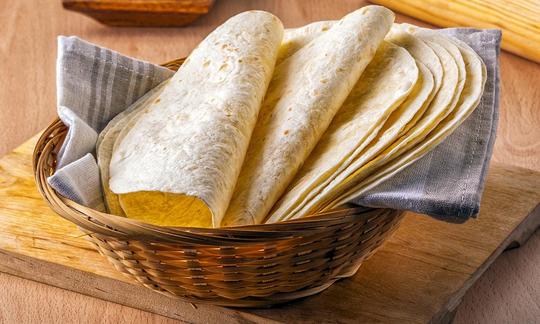

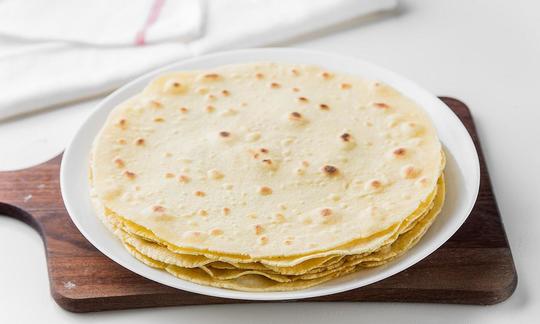

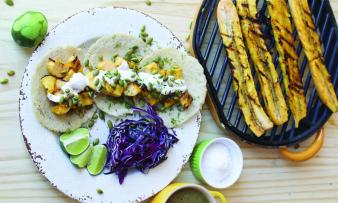

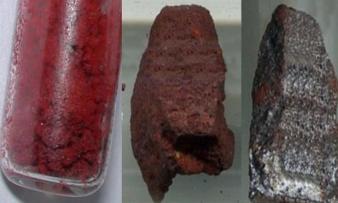
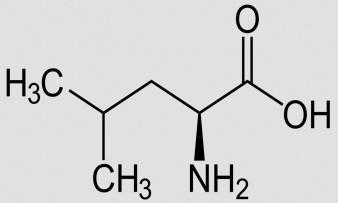


Comments